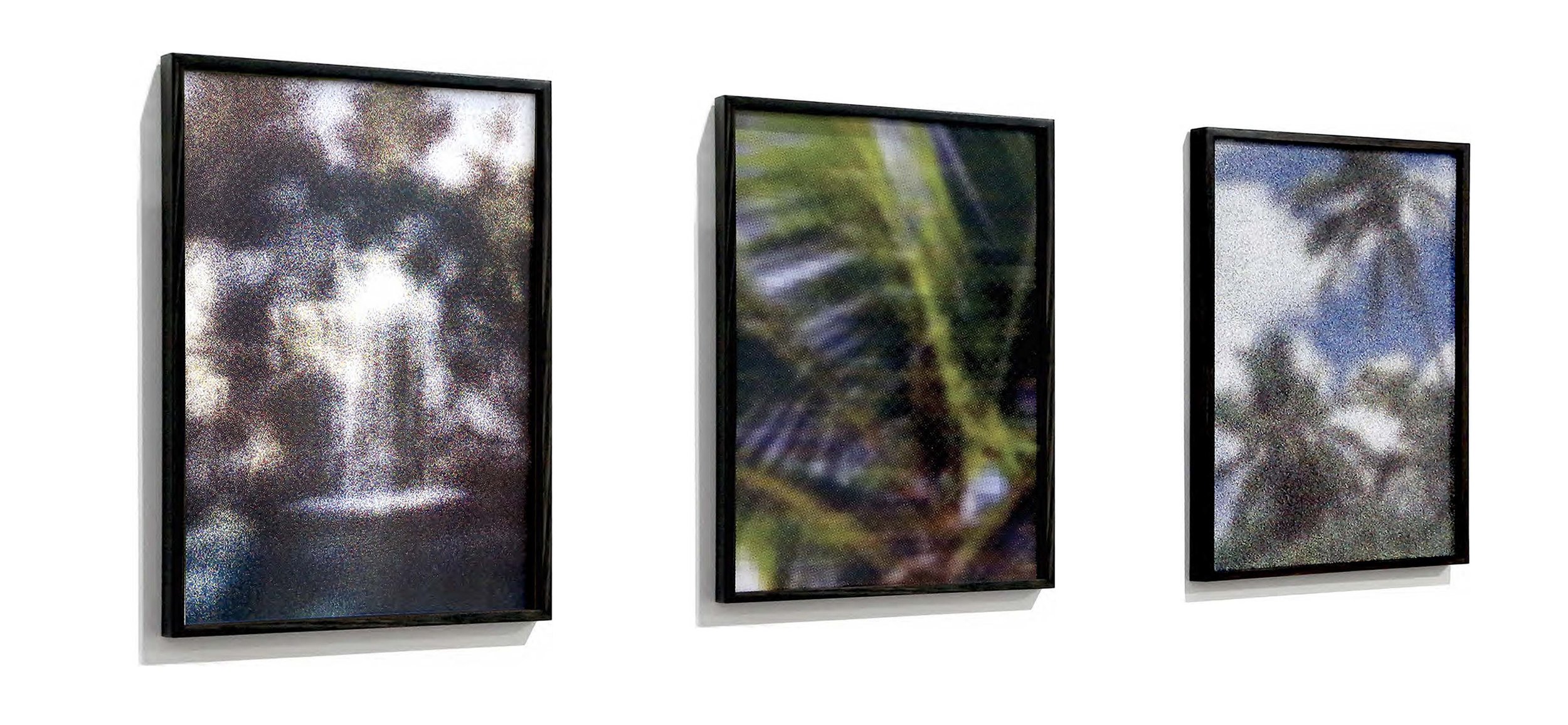MARK DUSTIN
Dr Mark Dustin is a Melbourne based artist and arts educator from New Zealand whose practice questions the value and veracity of images in contemporary media saturated environments, part of his ongoing research into digital processes within the ever expanding field of contemporary printmaking.
Dustin’s practice is one of ongoing inquiry into popular culture and media, the construction of the image at the level of the pixel and exploration of established definitions of art production. Investigating the abstract image alongside the digital print is part of a wider attempt to deconstruct and examine the artifice in contemporary media environments.
Dustin is a Senior Lecturer in Drawing & Printmaking at the Victorian College of the Arts, The University of Melbourne. He holds a PhD in Fine Arts from the Elam School of Fine Arts in Auckland.

Stock RC-1900, screen print on glass 2024, 60 x 42 cm // Stock RMF-TX3, screen print on glass 2022, 60 x 40 cm

Grotto 001, screen print on aluminium 2018, 80 x 60 cm // OS 1 and OS 2 screen print on aluminium 2018, 59cm x 42cm

Post Belvedere, screen print on aluminium (detail) 2017, 40 x 40 cm
Q & A
-
My initial attraction to printmaking came from my interest in photography and televisual mass media images during my years of undergraduate study. In particular, screen printing became a way of conceptually and materially executing my work in a way that I could not manifest in other mediums.
The ability to slow and hold reproduced media generated images and allow a new space for recontextualising and interpretation, became an essential part of my process that was key to my early ways of making as an artist. Understanding the long historical interconnectedness of printmaking and the dissemination of information and images became more evident over time and further made it the material form of engagement that best aligned with my ongoing areas of conceptual research.
My first exposure to printmaking as a young student was one of intimidation and fear of the technical exactitude that was seemingly required to make print ‘properly’. However, with guidance and research, I came to understand that this was a fictitious idea that I had incorrectly imagined about a medium that was aimed only at technical perfection. By more accurately understanding the process and embracing the potential for mistakes, I began to comprehend the experimental possibilities to seed and cultivate new ideas, as well as engage with other mediums. This engagement with process has always kept me coming back to printmaking over many years as a space for material and conceptual immersion.